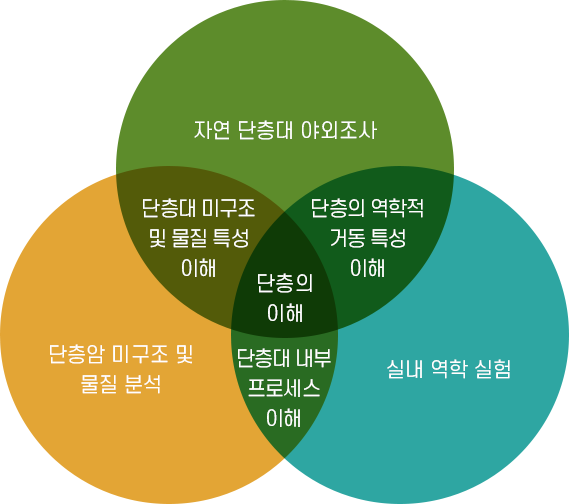Laboratory Introduction
“South Korea is no longer a safe zone from earthquakes.”
The 2011 Great East Japan Earthquake we witnessed, the 2016 Gyeongju earthquake, and the 2017 Pohang earthquake we experienced were all caused by fault slip. However, does fault slip always lead to earthquakes? How does an earthquake occur when a fault slips? Our Structural Geology Laboratory works to understand various phenomena caused by fault slips and ultimately find answers to the processes that lead to fault slipping and why.
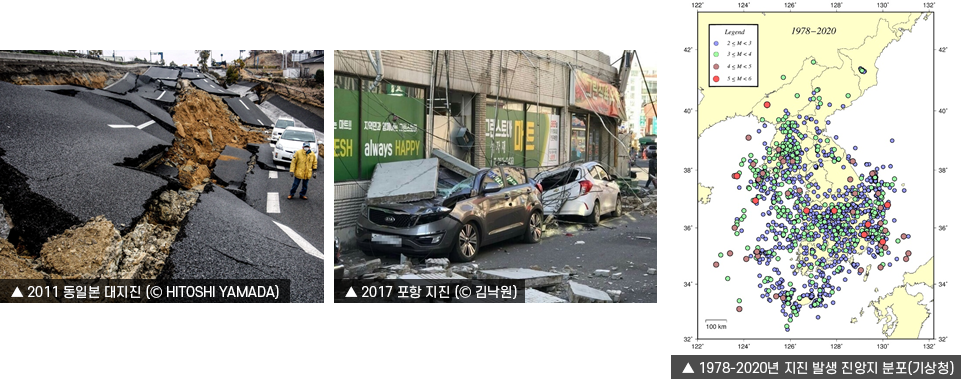
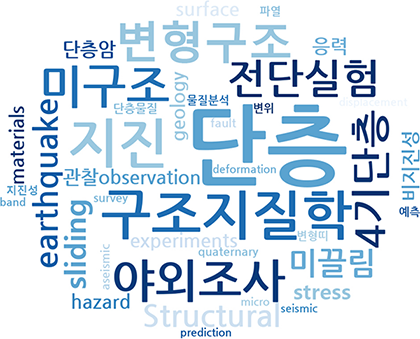
Research Contents
Investigation of Fault Outcrop
Since the fault retains traces of how it slipped in the past, observations are carried out on the outcrop scale first, and then bulk samples are taken for further observation and analysis.
Research Topics
Yangsan Fault, Active Fault, Deformation Band
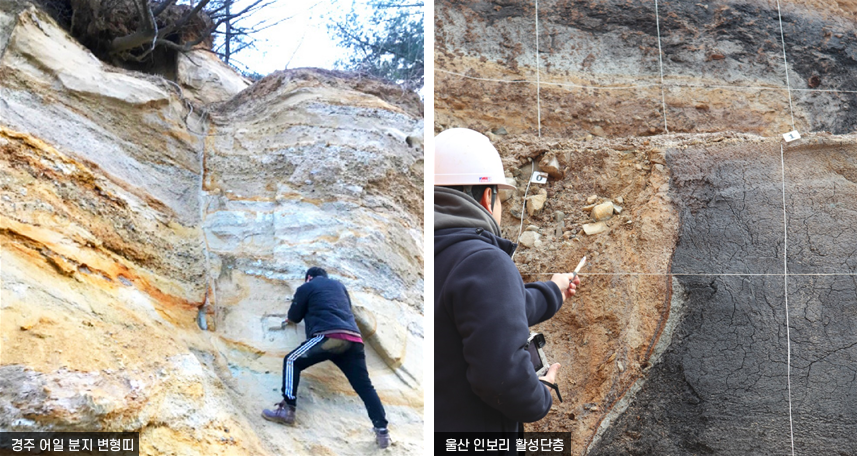
Material Analysis and Microstructural Observation
To conduct detailed observations of the samples collected in the field, slab sections are prepared in the laboratory for observation. Additionally, various analyses are conducted to determine the mineral composition of the fault rocks.
Analytical Institutions
Gyeongsang National University Center for Research Facilities, Korea Basic Science Institute, Korea Institute of Science and Technology
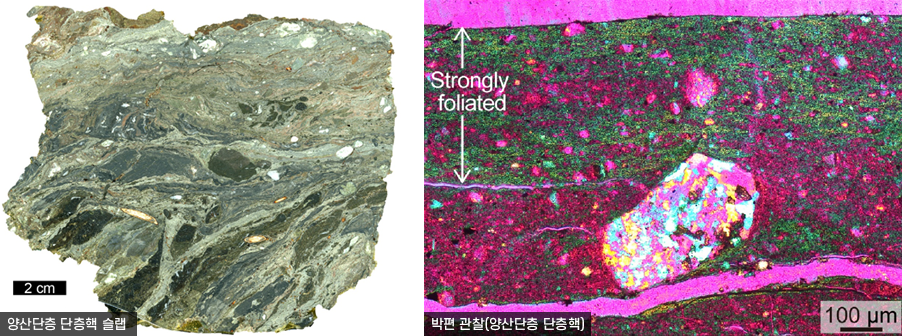
Indoor Shear Test
Various shear tests under different conditions are conducted using fault rocks to understand the mechanical characteristics of faults.
Testing Institutions
Korea Institute of Geoscience and Mineral Resources, Yamaguchi University (Japan), Kochi Core Center (Japan)

Understanding Faults
Combining the results from meso- and micro-scale observations and indoor shear tests, we interpret how the fault slipped and what type of slip it experienced.
